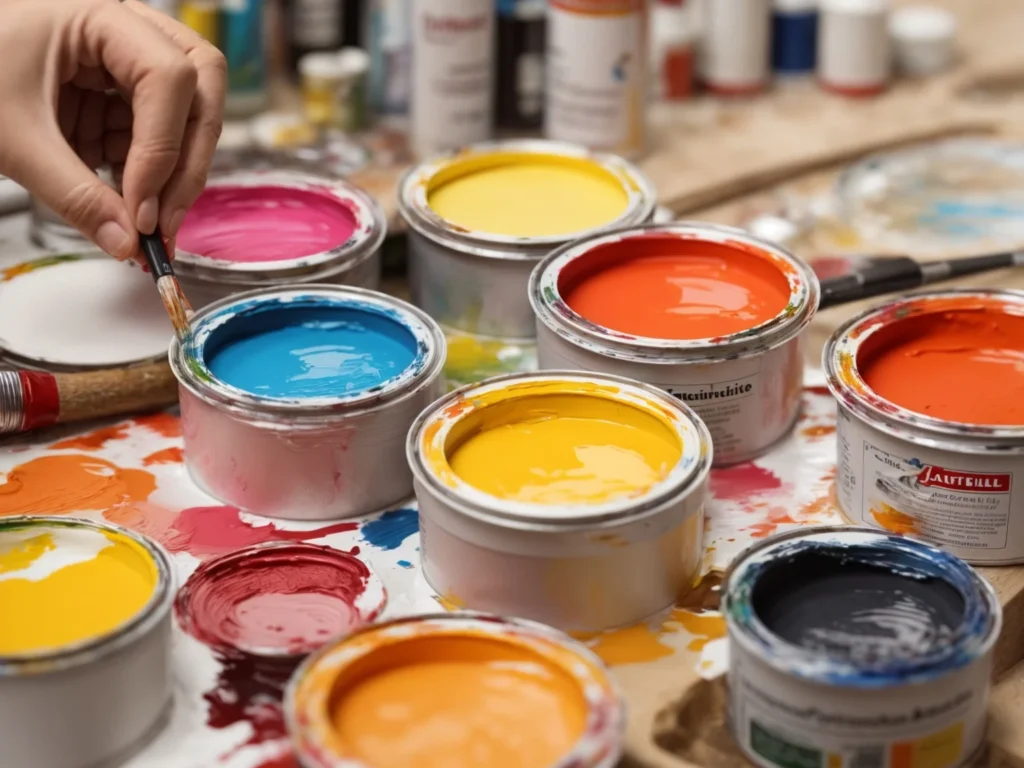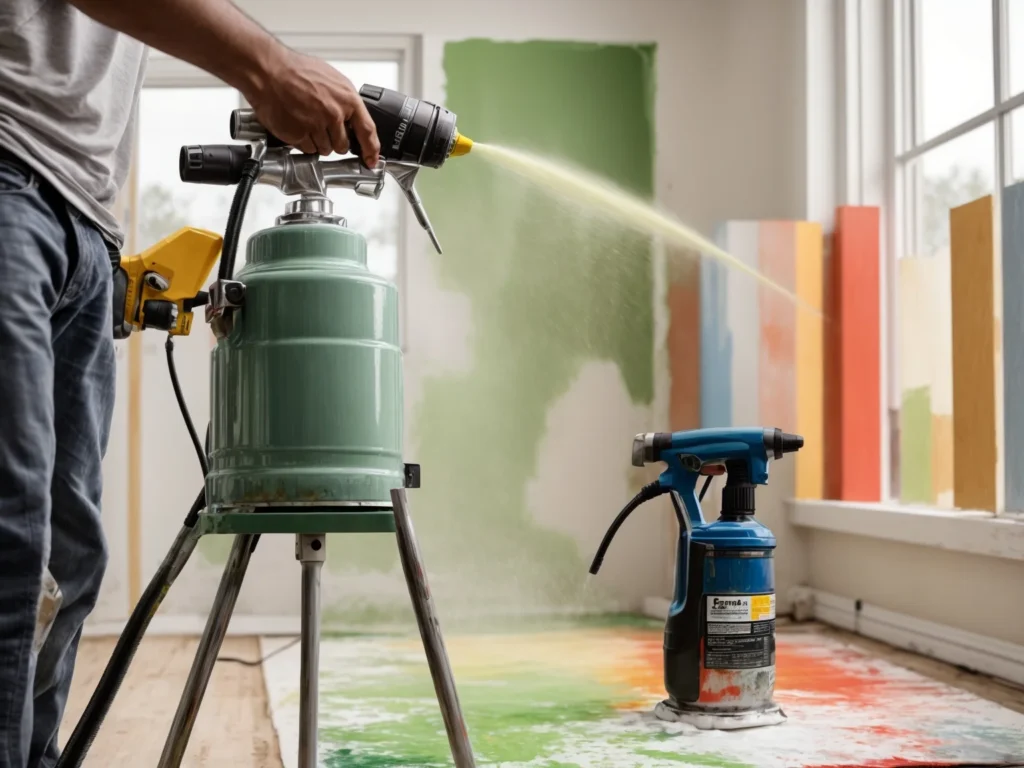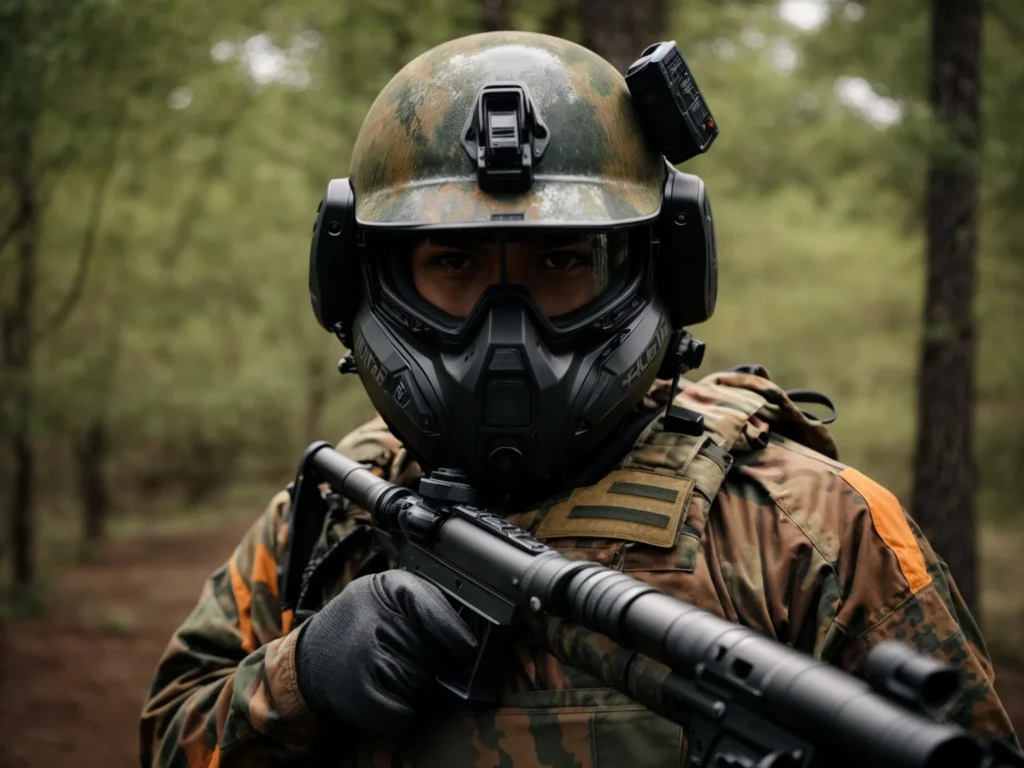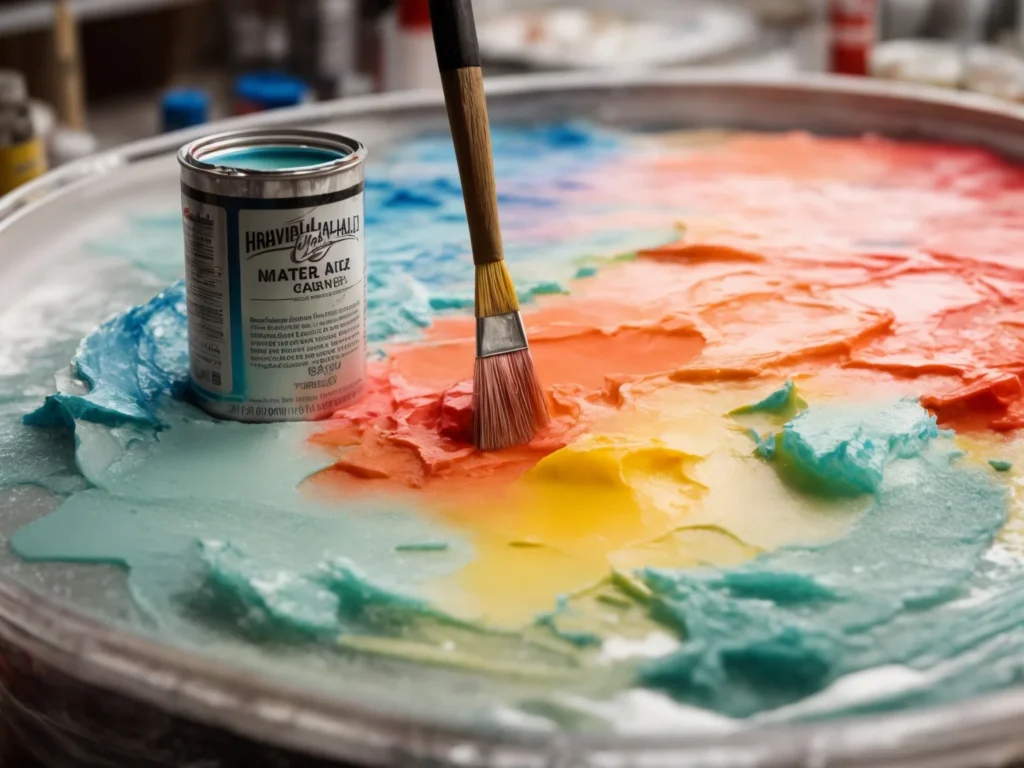Painting a car can be a fun and rewarding project. However, cold weather can present some unique challenges that must be addressed to achieve a professional-looking, durable paint job.
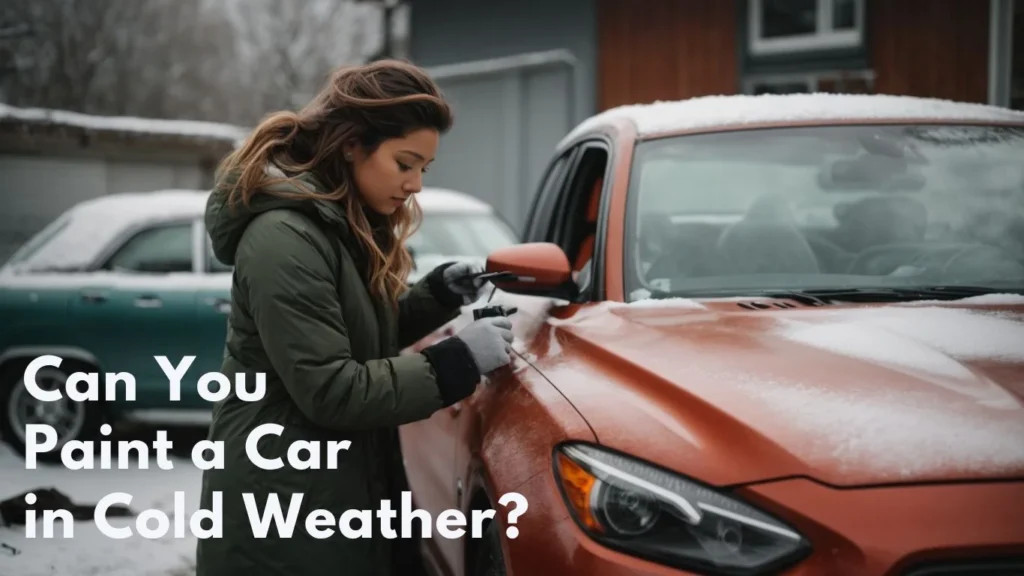
This guide will provide an overview of the ideal temperatures for painting a car, explain what happens when it gets too cold, and offer tips and techniques for prepping and painting a car in cooler weather.
What is the Ideal Temperature for Painting a Car?
The ideal temperature range for painting a car is between 68-77°F (20-25°C). Most automotive paints are formulated to react and cure properly within this temperature window. Painting in this ideal 68-77°F range will allow the paint to atomize correctly from the spray gun, flow, and level nicely on the car body, and build adequate film thickness. The paint will also be able to evaporate solvents and form crosslinks within the expected timeframe to achieve full hardness and durability.
Painting within the ideal temperature window provides the best conditions for the paint to look sharp right after application. It also enables clear coats and other paints to fully cure to their maximum hardness, which is essential for durability and longevity.
What Happens When It Gets Too Cold to Paint a Car?
Below around 60°F (15°C), the colder temperatures can start to affect the paint application and curing process. Here are some of the issues that can arise when the temperatures drop too low:
- Slow solvent evaporation – Most paints contain solvents that help the product flow and thin to the proper viscosity. In colder temps, the solvents evaporate much more slowly, leading to drying problems.
- Poor atomization – The paint may not fully atomize from the spray gun nozzle at lower temps, resulting in an uneven finish with more orange peel.
- Decreased flow and leveling – Colder paints will be thicker and won’t flow out as smoothly on the car body. This also leads to extra orange peel in the finish.
- Slower drying between coats – Paint layers can take significantly longer to dry in between application coats when it’s cold out. This can lead to paint wrinkling or solvent problems.
- Longer dust-free times – It takes longer for the paint to set up enough to resist dust at cooler temperatures. This makes the paint job more vulnerable to contaminants.
- Improper curing – Very cold temperatures can dramatically slow down the chemical curing process for some paints, stopping them from reaching full hardness and durability.
- Shortened pot life – Two-part paints like urethanes and epoxies will have shortened working times when mixed and applied at low temperatures.
How Cold is Too Cold to Paint a Car?
Generally, temperatures below 50°F (10°C) can cause car painting issues, especially when using spray equipment. The colder it gets, the more problems arise. Here are some temperature guidelines:
- 50-60°F (10-15°C) – Marginal spraying temperatures, drying will be very slow but paint still useable
- 40-50°F (5-10°C) – Difficult spraying conditions, only recommended with specific techniques
- Below 40°F (5°C) – Extremely challenging, painting not recommended without heated areas
- Below Freezing or 32°F (0°C) – Do not attempt to paint the car exterior in these temperatures
Additionally, certain paint products themselves have minimum application temperatures that must be observed:
- Primer Sealers & Surfacer Primers – 60-75°F (15-24°C)
- Two-Part Clear Coats – 60-75°F (15-24°C)
- Catalyzed Basecoats – 65-75°F (18-24°C)
- Epoxy Primers – 60°F (15°C) minimum
Going under these product-specific temperature limits can negatively affect the curing and performance of the paints. The technical data sheet for each product should list the required application temps.
Tips for Prepping and Painting a Car in Cooler Weather
If you need to paint a car when temperatures start dropping, here are some useful tips to help ensure a successful paint job:
Prep Work
- Wash and degrease the car body extremely thoroughly – missed grease or dirt can cause fish-eyes and adhesion loss in the cold.
- Apply painter’s tape when the surface is above 60°F to ensure good adhesion to metal and prevent lifting.
- Warm vehicle parts to room temp before primer and paint by moving indoors or use portable heaters in enclosed tenting.
- To improve adhesion, apply a thin “tack-coat” basecoat layer before full coats.
Painting
- Use slow evaporating thinners so the paint dries at an even pace without solvent popping.
- Allow longer flash times between coats to prevent applying paint layers too soon.
- Use a portable paint heater to warm cans of paint before spraying. Don’t used heat guns on painted panels.
- Use a heated paint suit to keep paint at optimum spraying temperature up to the gun.
Paint Booth/Shop
- Use insulated paint suits to retain body heat and keep paint warm when spraying.
- Position portable propane or kerosene heaters around the vehicle and spray area.
- Install plastic sheeting walls to contain the heat around the car as you paint.
- Use a thermometer to monitor temperatures and keep the area just warm enough for painting.
- Ventilate properly if heating the paint area to prevent dangerous buildup of fumes.
Drying/Curing
- Allow for extended drying times between coats when painting in colder areas.
- Cure painted panels fully indoors where it’s warm before assembling or exposing paint to the elements.
- Add extra coats of clear coat to provide adequate protection for the base color if drying overnight in colder temps.
- Use infrared paint curing lamps to cure panels if flash times get too long overnight partially.
- Do not leave freshly painted car outside if temperatures drop below freezing or frost may form.
Special Challenges of Cold Weather Painting
Painting a car in cold conditions below 60°F introduces some unique challenges that need special attention, techniques, and equipment to address:
Keeping Paint at Proper Temperature
The first issue is keeping the liquid paint at an adequate temperature to spray and cure correctly. As paint sits in the can or cup, it can rapidly cool to the surrounding air temperature and become too cold to atomize properly. This requires methods like paint heaters and insulated paint suits.
Preventing Surface Condensation
When colder surfaces are brought into a heated shop, condensation can form as the temperature shifts. This moisture has to be eliminated before painting or it can cause fish-eyes, blistering, and adhesion loss. The car must be kept in the warm area for many hours before painting.
Slowing the Drying Process
Cold temperatures dramatically slow down solvent evaporation from paint, which can lead to dripping, wrinkling, and improper curing if coats are applied too quickly. The drying process needs to be slowed down to match the colder conditions.
Maintaining Proper Spray Gun Technique
The decreased flow of thicker cold paint can require adjusting spray gun technique to get a proper spray pattern. Keeping the gun closer to the surface and using slower passes may help improve atomization.
Preventing Freezing of Paint
Freshly painted panels and parts must be protected from freezing temperatures, which can ruin uncured paint. It’s critical to allow proper drying indoors before exposing paint to below-freezing exterior temps.
Best Practices for Cold Weather Car Painting Projects
Painting a car in colder weather can produce a high-quality finish if additional care is taken. Here are some general best practices to follow for cold temp painting projects:
- Check product data sheets and only use paints formulated for low temp application
- Select paint guns designed to improve atomization in colder conditions
- Use the warmest area available and contain the heat around the car as you paint
- Allow for longer flash times between coats as indicated by the paint manufacturer
- Carefully monitor the paint temp at the gun to keep it within specifications
- Use insulated paint suits, warmers, and other methods to maintain paint temp
- Prevent any moisture or condensation from contacting the vehicle before or during painting
- Apply extra care with prep work like cleaning and taping for maximum paint adhesion
- Allow painted panels to cure fully indoors before exposing to cold exterior temps
The Curing Process in Cooler Temperatures
While application in colder temperatures can be challenging, what happens after spraying is just as critical. If freshly painted panels are left to cure too cold, the paint may not properly crosslink and develop final hardness and durability.
2K clear coats, primer sealers, catalyzed basecoats and other paints require a certain temperature range to cure fully. Check the product data sheet for the exact limits, but most need 60-75°F for proper curing. If painted parts cure too slowly or at temperatures below the material limit, the paint film may stay soft, fail to reach full gloss, lose adhesion, and provide inadequate protection.
When paint cannot fully cure due to cold temperatures, issues like the following can result:
- Loss of gloss levels and altered color
- Reduced mar and scratch resistance
- Insufficient chemical resistance
- Shortened service life and early failure
- Increased chance of cracking or checking
- Poor hardness and inadequate film build
Painted panels or assemblies left outside to cure in freezing temperatures can be especially problematic. Any moisture on the paint from rain, snow or frost can cause immediate damage to the uncured paint film. Significant blistering, loss of adhesion, cracking, and failure to cure properly will occur.
Temperature Considerations for Clear Coat Application
Clear coats require especially careful temperature control during application and curing. Most 2K or two-component clear coats specify a minimum application temperature of 60-75°F (15-24°C). The full curing process takes longer and requires ample warmth for proper crosslinking.
Applying clear coat when it’s too cold can result in the following issues:
- Longer than expected drying times leading to possible paint defects
- Reduced gloss and altered final appearance
- Poor mixing with catalyst hardener resulting in soft uncured films
- Lack of proper flow and leveling due to higher viscosity
- Inability to build recommended film thickness
- Slow curing preventing the clear from reaching full hardness
Leaving freshly applied clear coat at temperatures below 60°F will dramatically lengthen the curing process, taking possibly weeks instead of days to reach final cure. The clear may remain soft and tacky long-term.
How to Dry and Cure Paint in Cold Conditions
Sometimes vehicles need to be painted right before winter and will not be stored in a warm shop. This makes drying and curing the fresh paint more challenging. Here are some tips for dealing with paint drying in colder conditions:
- Carefully monitor forecast temperatures – severe cold spells can damage uncured paint
- Select paint products rated for low temp use down to 35°F if needed
- Allow double the normal flash times between coats of paint at lower temperatures
- Use paint heaters, infrared lamps, or heated areas to assist paint drying
- Run dehumidifiers if humidity will cause condensation on wet paint
- If leaving outside, cover vehicle with tarp or car cover, avoid direct skin contact with paint
- For multi-day curing, put vehicle in enclosed trailer or non-insulated garage area
- Do not allow painted vehicle outside if temperatures may drop below freezing
- Expect extended cure times of possibly weeks before paint reaches full hardness
Freshly painted cars can cure even in colder conditions with extra care and patience. However, freezing temperatures must be avoided, and curing times will significantly extend compared to warmer weather painting.
Tips for Touch-Up Painting in Cold Weather
Small touch-up paint jobs also require adjusting techniques when temperatures are low:
- Use touch-up paint pens rated for application down to 50°F if needed
- Warm the repair area with heat gun before applying paint pen for better flow
- Apply light “mist” coats first to build up color gradually, avoiding heavy coats
- Allow painted area to flash off adequately between touch up coats
- Cure touch-ups with paint pen heater or infrared lamp after application
- Avoid paint pens with excess solvents to prevent shrink back and slow curing
- Do not use touch up paint pens on cars kept outside in below freezing temperatures
With care, minor paint chips and flaws can still be repaired in colder weather using quality touch up paint pens and allowing extra cure time.
Conclusion
Painting a car when temperatures drop, requires careful planning, slower processes, and additional equipment. But with the right products and techniques, high-quality paint jobs can still be achieved in cooler conditions. Understanding the ideal temperatures for application and curing, adjusting for slower dry times, and controlling the paint temperature are the keys to a great finish even during cold weather.


